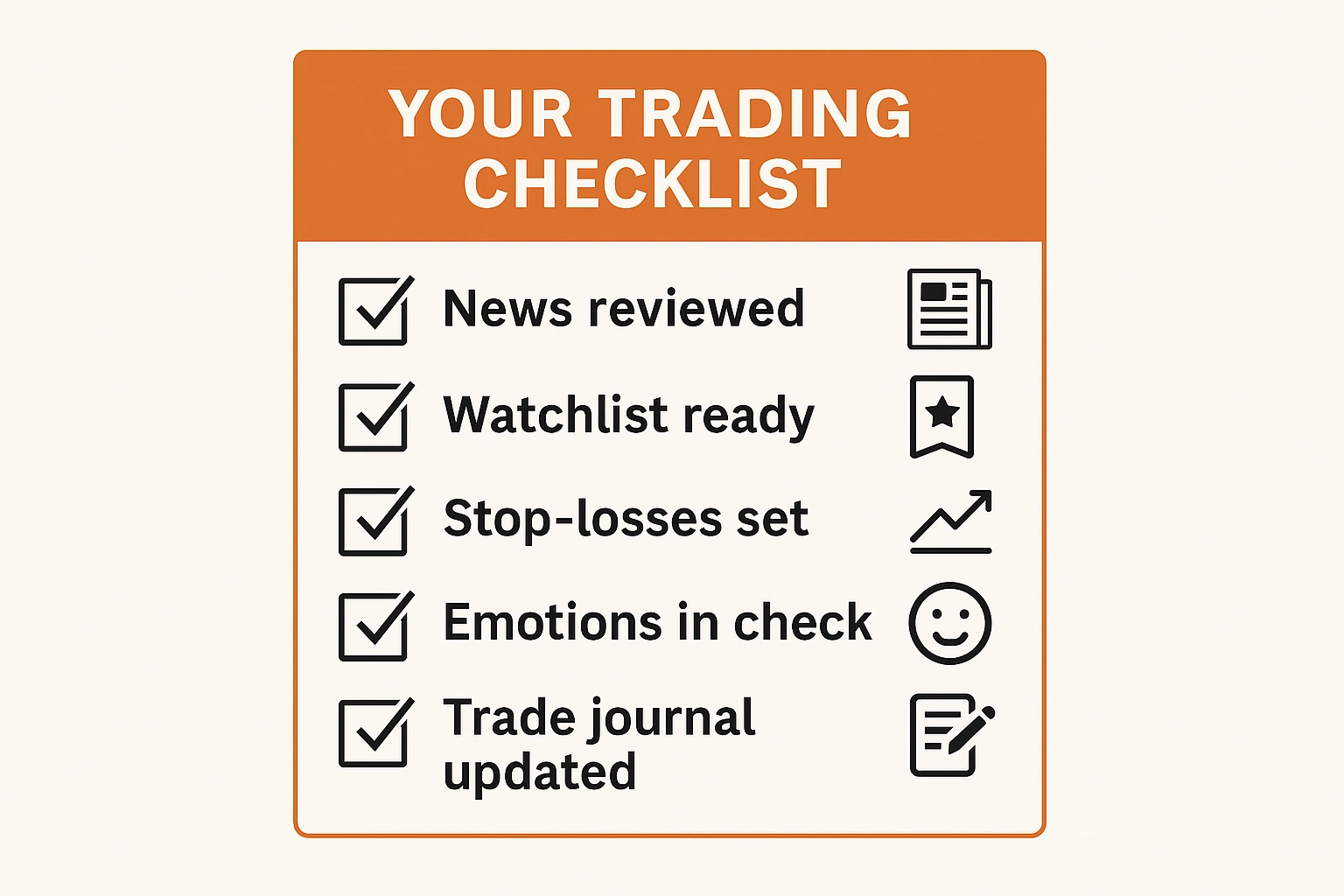How to Build a Trading Routine That Works
Success in trading rarely happens by accident. It usually grows out of doing the right things, over and over again. That’s where having a routine makes all the difference. If you’re just getting started, or you’ve been winging it for a while, it might be time to create some structure around your trading days and weeks.
So, how do you actually set up a routine that sticks?

Why Routine Isn’t Just for Robots
Markets are unpredictable, but your behaviour doesn’t have to be. Without a routine, it’s easy to let distractions, emotions, or social media headlines drive your trading. You might enter a position because someone tweeted about it, or stay glued to the charts far longer than planned.
Creating a routine adds rhythm to your actions. You become more focused, more measured, and less prone to knee-jerk reactions.
Think about it: Are you trading with intention, or just reacting to what’s flashing on your screen?
Daily Habits That Actually Help
Let’s keep it simple. These daily steps may seem small, but together, they shape the way you trade:
- Start with a quick check-in: Scan the news, glance at the calendar, review your open positions. Anything major coming up?
- Plan your stops and targets ahead of time: Deciding your exit before you even enter helps you avoid heat-of-the-moment mistakes.
- Track your trades: Jot down what you did and why, not just the numbers, but how you felt too. Over time, this becomes gold.
- Give yourself a breather: Too much screen time leads to fatigue. Step away every now and then. Your decision-making will thank you.
- Take a mental pulse: Feeling rushed? Greedy? Frustrated? Spotting your mood early can stop bad trades before they happen.
Now ask yourself: Which of these do I already do well? Which ones could I start tomorrow?
Weekly Habits to Keep You Honest
Weekly routines help you zoom out and see the bigger picture. This is where growth really starts to happen.
- Look back at your week: What went according to plan? What didn’t? Be honest, no sugarcoating.
- Check your strategy’s fit: Did the market change? Should you adjust your approach?
- Monitor your risk levels: Are you overexposed on certain trades or pairs?
- Sketch out the week ahead: Key events, major market openings, or specific setups to watch for.
Pause for a moment: If every week looked like this one, would I feel confident in my progress?
Making Your Own Routine
Forget copying someone else’s plan. Your lifestyle, goals, and trading hours are unique, your routine should be too.
Here’s a starting point:
- Decide how much time you can commit. Morning sessions? Evening reviews?
- Break your workflow into chunks: prep, execution, and wrap-up.
- Use a demo account to test your system. Get the reps in without real risk.
- Set alerts or reminders to keep things running smoothly.
Ask yourself: What would an ideal trading day look like, and how close can I get to that?
Common Pitfalls (and How to Dodge Them)
Even good routines fall apart if you’re not careful. Here are a few common traps:
- Skipping your end-of-day review (it piles up fast).
- Overtrading just to stay “active.”
- Switching strategies every time something goes wrong.
- Letting one bad trade ruin your whole week.
When in doubt, don’t try to be perfect, just aim for consistency. A decent routine you stick to beats a flawless one you don’t.
Final Thoughts
Your trading routine doesn’t have to be complicated. But it does need to be yours, and it needs to serve your long-term goals. Use whatever tools help you stay on track. Trade with EC Markets to set chart alerts, and other features that can support a consistent rhythm.
So, here’s your question to carry forward: What would change if you simply showed up and followed your plan every single day, no shortcuts, no guesswork?
Start simple. Stay steady. That’s how routines become results.